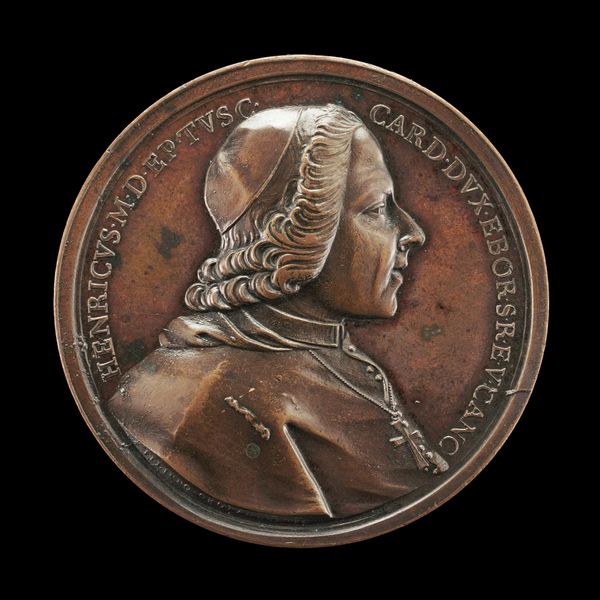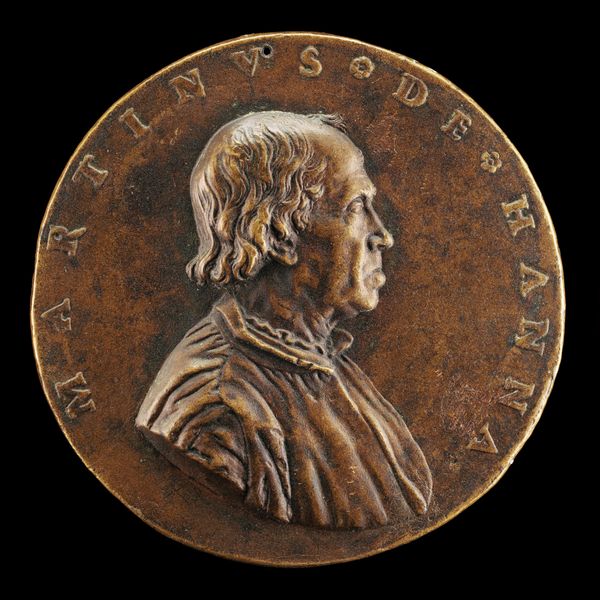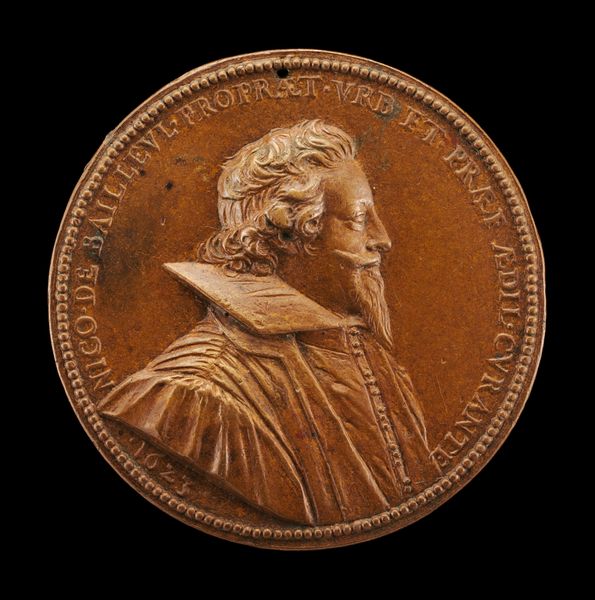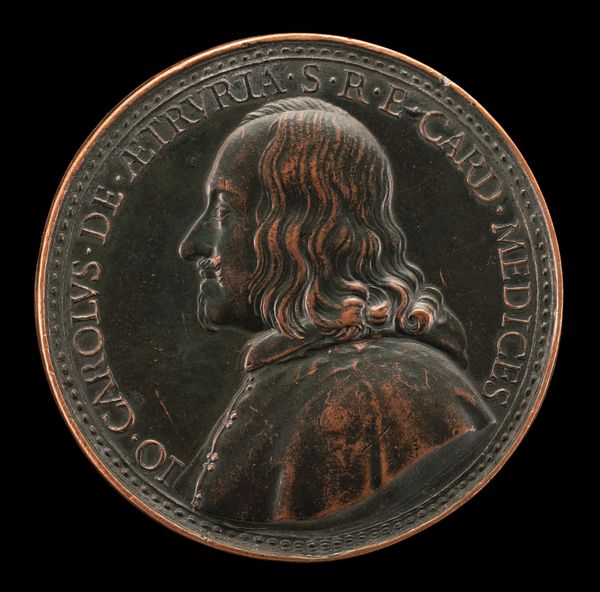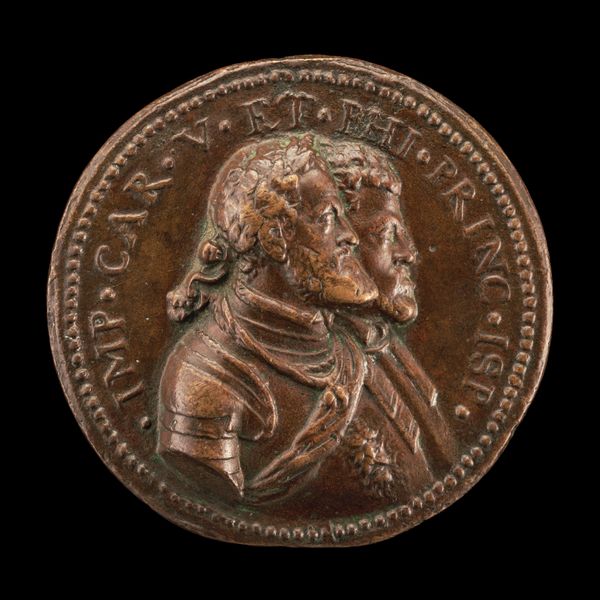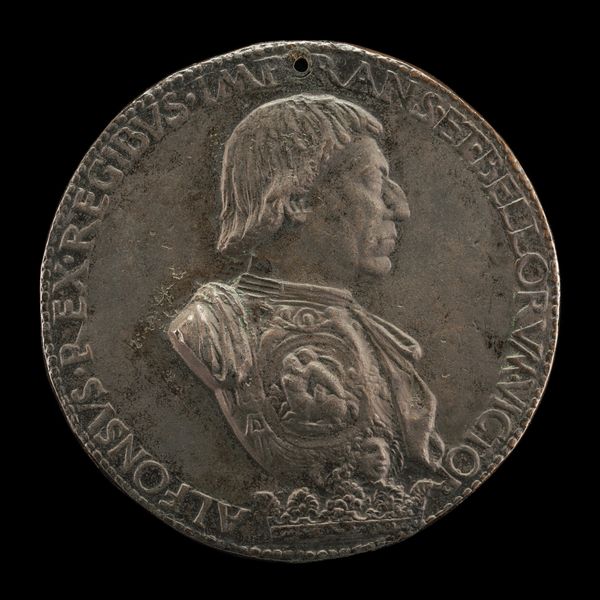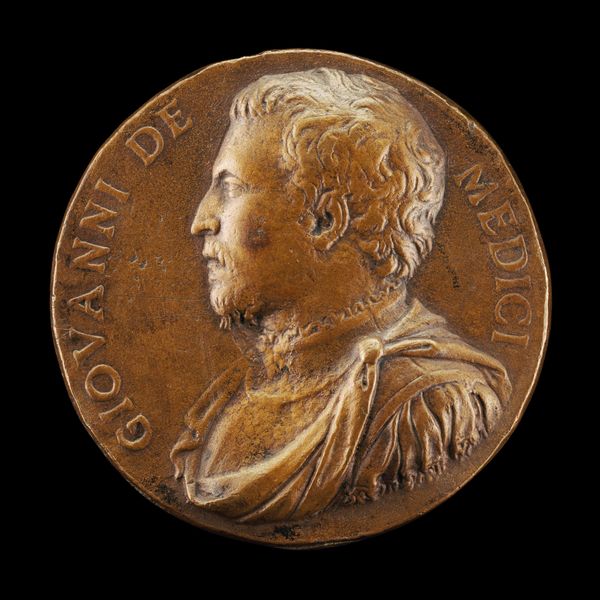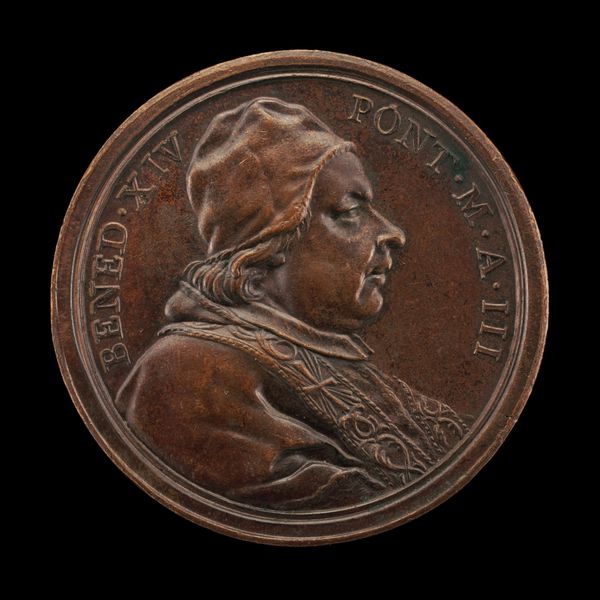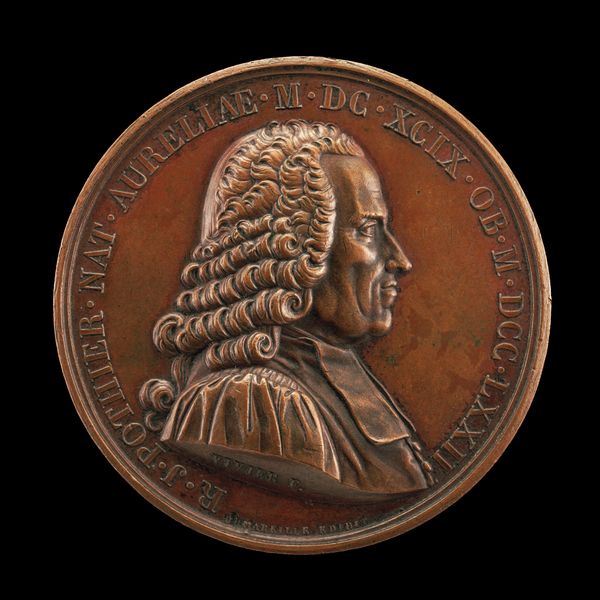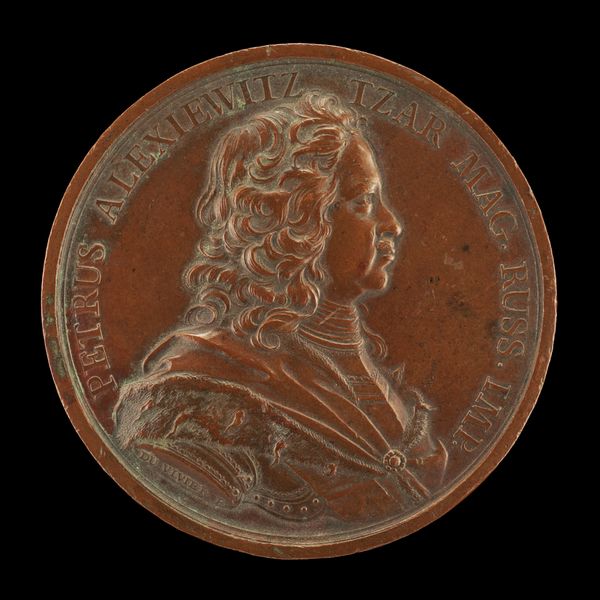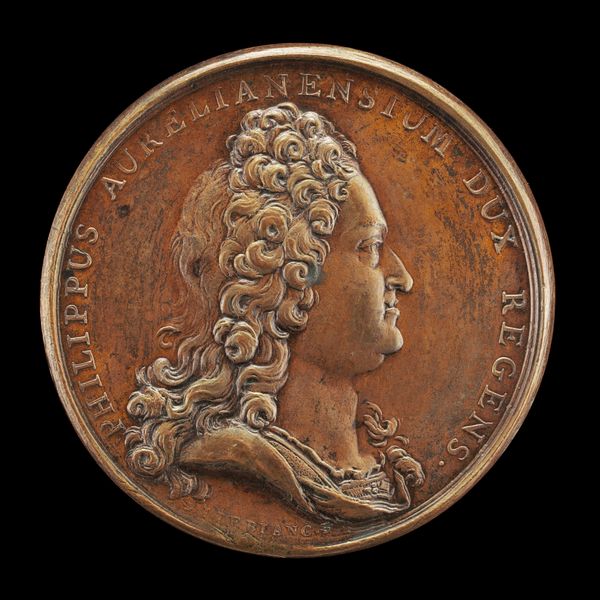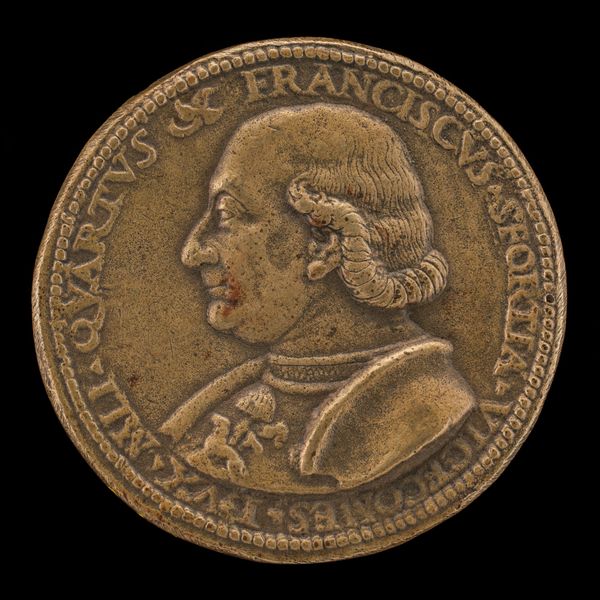![Oliver Cromwell, Commemorating the Victory at the Battle of Dunbar [obverse] by Thomas Simon](/_next/image?url=https%3A%2F%2Fd2w8kbdekdi1gv.cloudfront.net%2FeyJidWNrZXQiOiAiYXJ0ZXJhLWltYWdlcy1idWNrZXQiLCAia2V5IjogImFydHdvcmtzL2MzNzM4MDgwLTBmNDQtNDRhNy05NGU0LTQ0MjllMTE2ZmMyZi9jMzczODA4MC0wZjQ0LTQ0YTctOTRlNC00NDI5ZTExNmZjMmZfZnVsbC5qcGciLCAiZWRpdHMiOiB7InJlc2l6ZSI6IHsid2lkdGgiOiAxOTIwLCAiaGVpZ2h0IjogMTkyMCwgImZpdCI6ICJpbnNpZGUifX19&w=3840&q=75)
Oliver Cromwell, Commemorating the Victory at the Battle of Dunbar [obverse] 1650
0:00
0:00
metal, relief, sculpture
#
portrait
#
baroque
#
metal
#
sculpture
#
relief
#
sculpture
#
carved
#
history-painting
Dimensions: overall (oval): 3.3 x 2.8 cm (1 5/16 x 1 1/8 in.) gross weight: 14.71 gr (0.032 lb.) axis: 12:00
Copyright: National Gallery of Art: CC0 1.0
Editor: So, this intriguing medal is entitled "Oliver Cromwell, Commemorating the Victory at the Battle of Dunbar," made in 1650 by Thomas Simon. It's quite striking, how the relief almost pops out! What are your first impressions of the piece, considering its historical context? Curator: Immediately, I see this medal not just as a portrait, but as a potent piece of political propaganda. The very act of creating this medal commemorates and legitimizes Cromwell's victory at Dunbar. What I find fascinating is how the inscription "WORD AT DVNBAR. SEPTEMBER. THE 3. 1650" coupled with "THE LORD OF HOSTS" blends military triumph with divine will. In effect, it says, God was on Cromwell's side! Don't you agree it attempts to construct a very particular image of Cromwell? Editor: I see what you mean! It’s crafting a narrative. A 'divinely ordained' narrative! Do you think its Baroque style contributes to this political message? Curator: Absolutely. The Baroque, with its drama and grandeur, was often employed to communicate power and authority. Simon utilizes relief and detailing in a way that would have elevated Cromwell in the eyes of contemporaries. Consider, also, the role such medals played. They weren't just art objects, they circulated; spreading a message within elite circles. Editor: So it's about dissemination of power? More about the effect on society, less about 'art for art's sake'? Curator: Precisely. How museums choose to display such pieces also influences our perception of history. Are we celebrating a leader or analyzing how power was consolidated? It is a potent item. I am left to wonder, where should we draw the line in what can or should be displayed in modern public life? Editor: That's a really good question! It’s amazing to consider this medal as not just art but as a political and social object too! Thanks! Curator: Indeed, recognizing its role helps us better understand the complex relationship between art, power, and society. It really speaks to art's capacity to shape perceptions, especially about historical events.
Comments
No comments
Be the first to comment and join the conversation on the ultimate creative platform.
